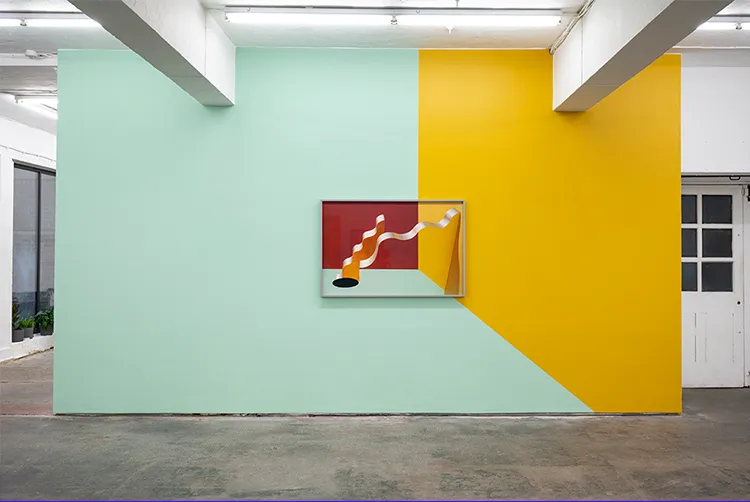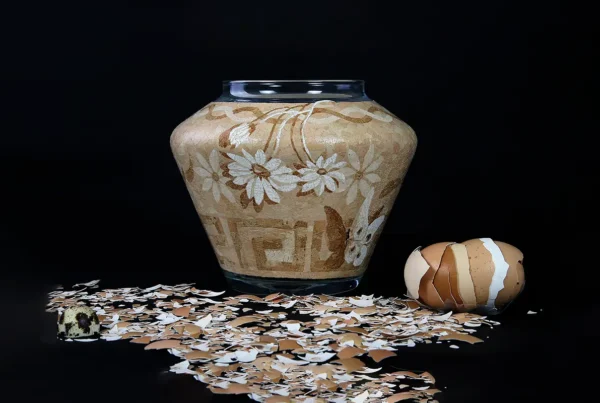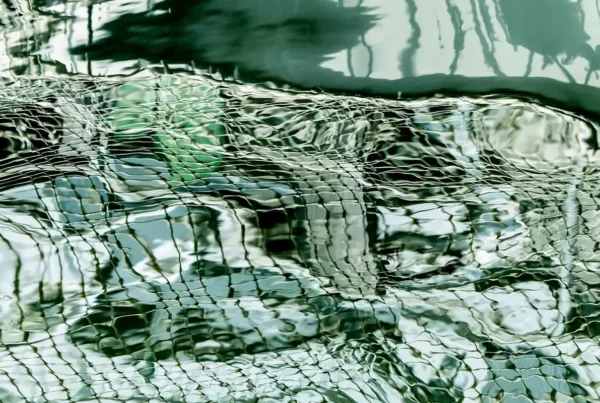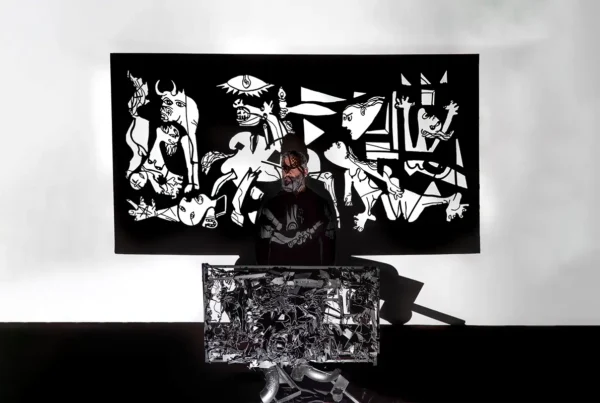Erin O’Keefe: Challenging Perception Through Architecture and Art
Erin O’Keefe stands at the intersection of photography and architecture, using her background in both fields to explore the ways in which space, form, and perception interact. Her work, known for its striking geometric compositions and bold use of color, examines how three-dimensional objects can be translated into two-dimensional images, often confounding viewers’ sense of depth and reality. Based in both New York City and New Brunswick, Canada, O’Keefe draws on her architectural training to create highly controlled still-life scenes that blur the boundaries between photography, painting, and sculpture. Her distinctive approach positions her within a broader lineage of photographers who, over the past century, have pushed the medium’s boundaries.
O’Keefe’s journey began with a Bachelor of Fine Arts from Cornell University and a Master’s degree in Architecture from Columbia University. For over two decades, she taught architecture, during which she immersed herself in the color theories of Josef Albers, investigating how color influences spatial perception. This deep exploration of visual phenomena became a launching pad for her photographic practice, where she constructs intricate tableaux using simple materials like cardboard, plexiglass, and wood. Through precise lighting and careful composition, she creates images that seem to collapse three-dimensional objects into flat, painterly forms. These photographs play on visual ambiguity, where the real and the imagined become difficult to distinguish, evoking the optical tricks of artists like M.C. Escher and architects like Le Corbusier.
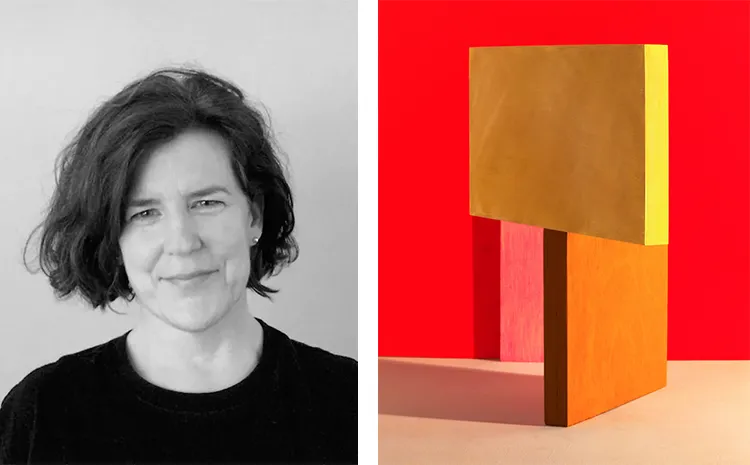
Erin O’Keefe: The Architect’s Eye in Photography
O’Keefe’s art practice is deeply rooted in her background as an architect. For her, architecture is not just a professional path but a lens through which she views the world—one that informs her photography in profound ways. Her work seeks to answer complex questions about how we perceive space and form, translating these inquiries into a visual dialogue between two-dimensional and three-dimensional realms. In her photographs, the camera becomes a tool for exploring the distortions and misinterpretations that arise when three-dimensional spaces are flattened into a photographic image.
In these meticulously staged compositions, O’Keefe often incorporates hand-painted geometric shapes—blocks, cylinders, and panels—arranged with mathematical precision. The resulting photographs bear the hallmark of architectural design, where each element is strategically placed to evoke a sense of both order and tension. The lighting in her works is key to achieving this effect, casting shadows and creating contrasts that heighten the sense of spatial ambiguity. It is this deliberate confusion of depth and flatness that makes her work so engaging, forcing the viewer to reconsider their assumptions about how space operates within the confines of a two-dimensional image.
O’Keefe’s photographs are frequently compared to abstract paintings, yet their origins in sculpture and architecture are undeniable. The geometric precision of her compositions reflects a modernist aesthetic, while the play of light and shadow lends her work a more dynamic, almost playful quality. This duality—between the rigid structures of architecture and the fluid, interpretive nature of art—defines O’Keefe’s oeuvre, positioning her as an artist who transcends traditional boundaries.
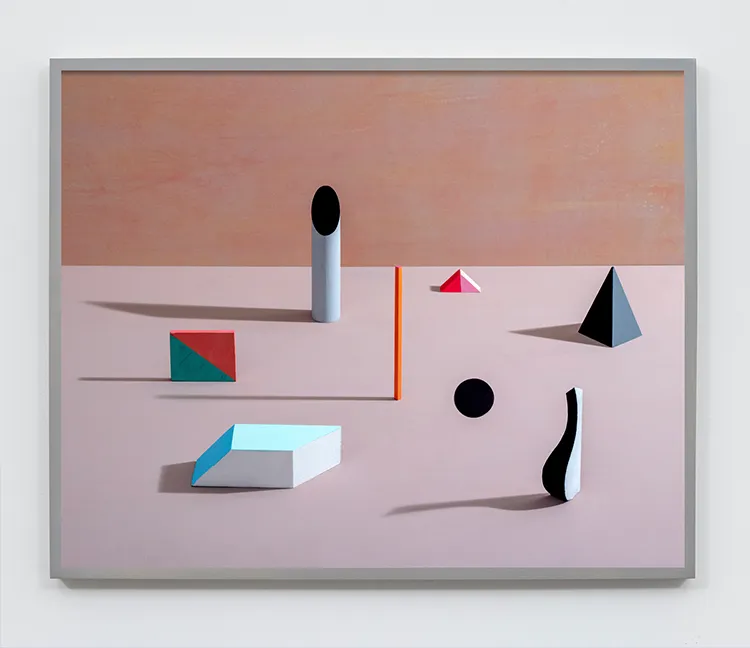
Playing with Light and Form: Visual Deception in O’Keefe’s Work
At the core of Erin O’Keefe’s art is a fascination with how light interacts with form. Her photographs are vivid experiments in visual perception, designed to deceive the eye and challenge preconceived notions of reality. Each composition plays with perspective, making solid objects appear flat and static ones seem to hover or shift. In some works, O’Keefe’s use of color and shadow is so precise that viewers are left questioning the authenticity of the objects in the frame—whether they are photographs of real objects or merely painted illusions.
O’Keefe often paints her geometric shapes with rough brushstrokes, allowing the texture of the paint to become part of the narrative. This tactile quality invites a closer inspection, yet the viewer is continually thwarted by the inherent flatness of the photograph. The interplay between rough, textured surfaces and the smooth, sleek lines of her compositions only adds to the sense of disorientation. This deliberate manipulation of texture and form is what makes her work so striking: it is at once minimalist in its simplicity and complex in its execution.
The vibrant, contrasting colors O’Keefe employs further enhance the sense of spatial ambiguity. Bright primaries are set against softer pastels or neutral tones, while shadows are used not merely as accents but as active participants in the composition. These shadows often blur the lines between the objects and their surroundings, adding another layer of deception. Through this manipulation of color, form, and light, O’Keefe creates a visual language that questions the very nature of perception, urging viewers to look beyond what is immediately visible.
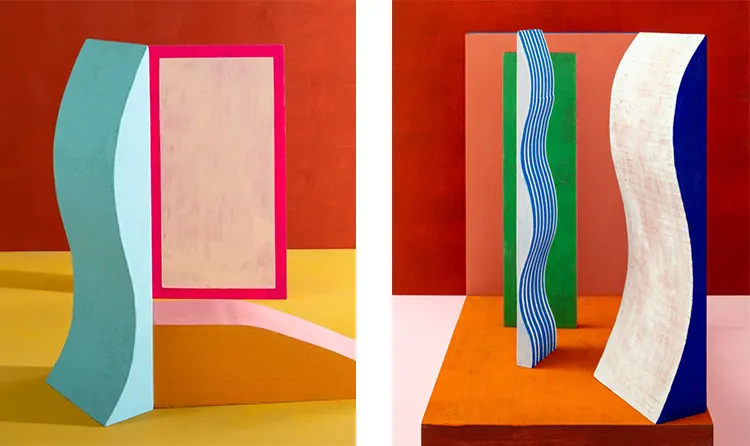
Erin O’Keefe: Blurring the Boundaries of Mediums and Reality
O’Keefe’s practice transcends the traditional boundaries between mediums, merging elements of sculpture, painting, and photography into a cohesive artistic vision. Her background in architecture not only informs the structural elements of her work but also influences the way she engages with space itself. Her photographs are often described as architectural in their precision, yet they resist any strict categorization, functioning instead as hybrid objects that exist somewhere between reality and illusion.
In many ways, O’Keefe’s work recalls the perspectival tricks of Renaissance painters, particularly Giotto, who was among the first to explore how depth could be represented on a flat surface. Similarly, O’Keefe plays with the relationship between flatness and volume, using her camera to distort and collapse space. Her photographs do not merely document objects; they are active participants in a game of visual deception, inviting the viewer to reconsider their understanding of both photography and sculpture.
Thematically, O’Keefe’s work also aligns with contemporary artists like Barbara Kasten, whose interest in the materiality of photography parallels O’Keefe’s own explorations. Both artists engage with photography on a fundamental level, questioning its limitations and possibilities in the digital age. For O’Keefe, however, the conversation is always rooted in her architectural training, which provides the foundation for her visual experiments. By blending these disciplines, O’Keefe not only creates visually compelling images but also contributes to an ongoing dialogue about the nature of art, perception, and space.
